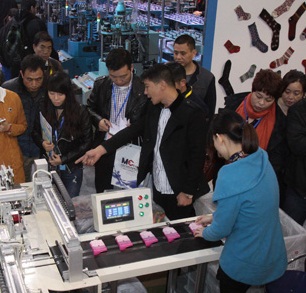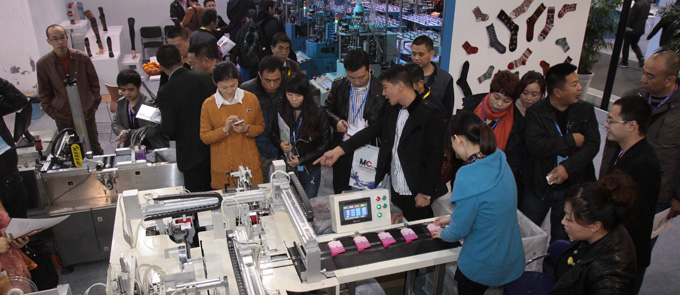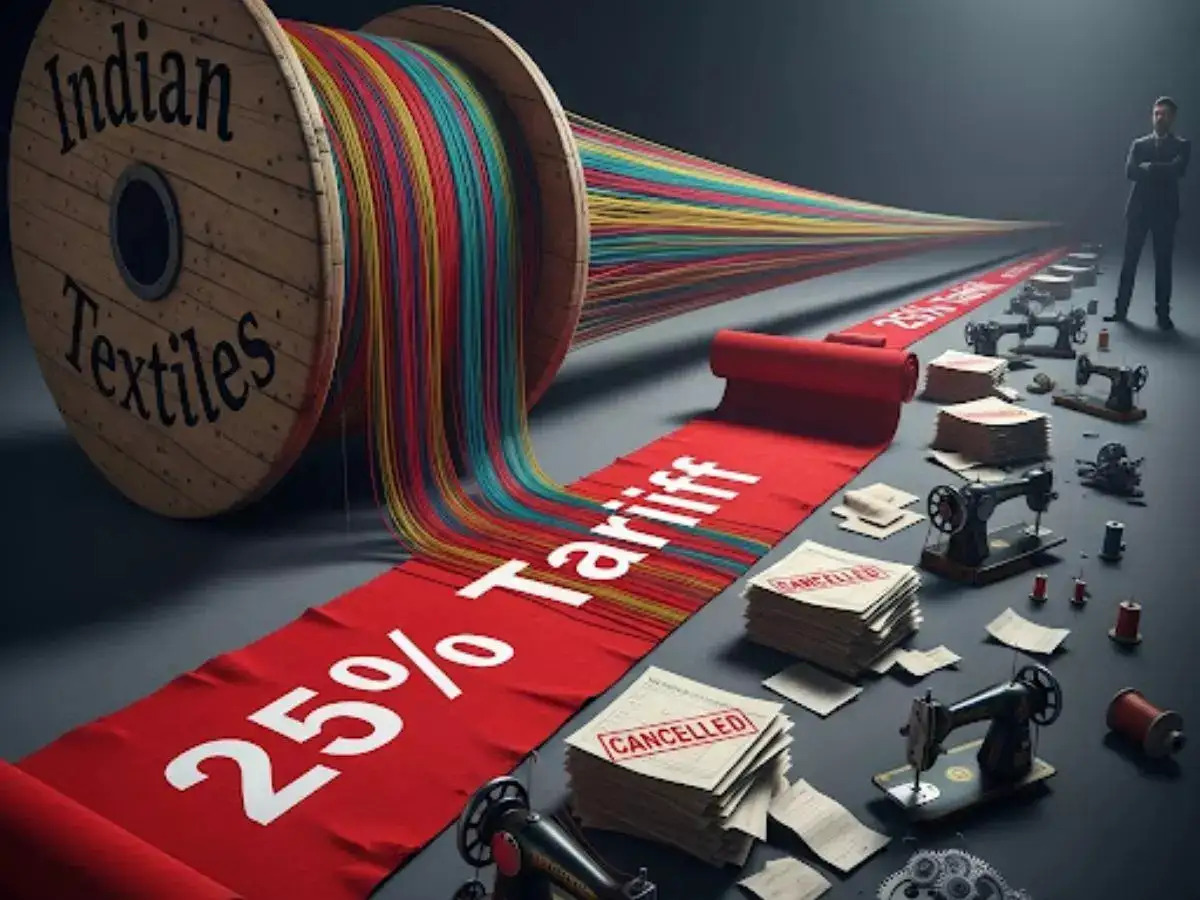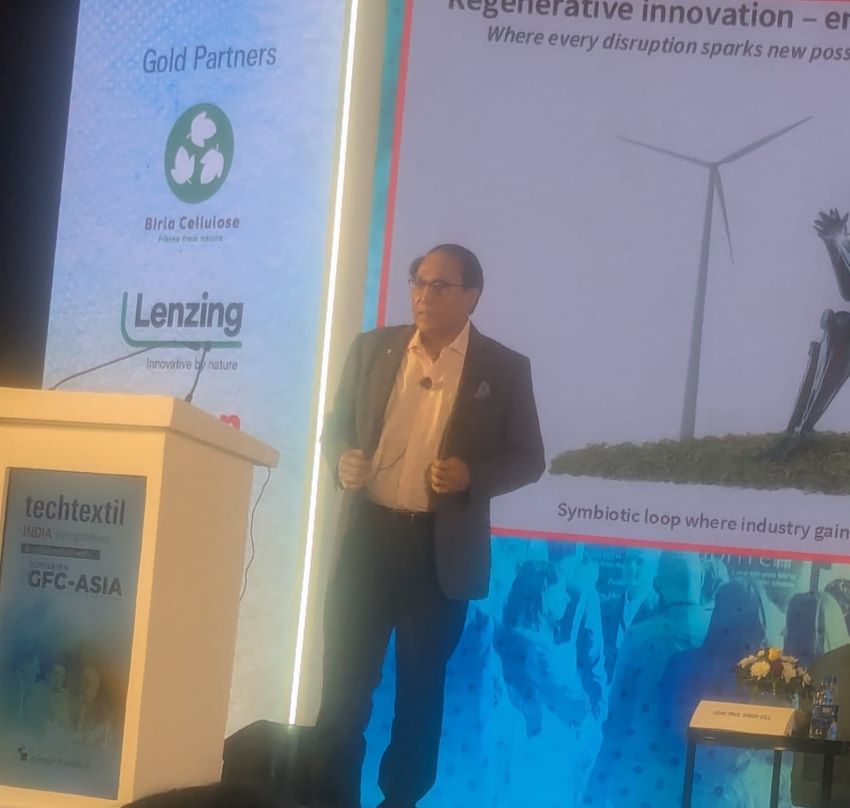FW
India’s share in the global apparel trade has remained modest, with a share of just four per cent last year. The country’s market share in world trade has not significantly changed despite the depreciation of the Indian rupee during the last three years.
While China, Bangladesh and Vietnam have increased their share in the global apparel trade substantially, India's share has remained modest despite the fact that India is among the largest producers of cotton and man-made fiber and has the second largest capacity for spinning and weaving.
China is the largest apparel exporter on account of the largest global capacities across the textile value chain. The fragmented nature of the weaving, processing and garmenting industries, the low levels of modernisation, high costs of production, the modest share of non-cotton apparel and a reliance on imported machinery across the textile chain have been the key factors which have constrained growth in India's apparel exports.
It is the spinning sector that has mainly availed of the benefits of the flagship program for textile sector upgradation, the Technology Upgradation Fund Scheme. The downstream sectors (weaving, processing and garmenting) have witnessed limited participation. The domestic apparel market has grown at a mean annual growth rate of 10 per cent over the last five years.
Recently, at HCM City's War Remnants Museum, a collection of Vietnamese ao dai and Indian saris was showcased at a fashion show held there.
Organised by the Indian Consulate General of HCM City and the Ao Dai Museum, Ao Dai and Sari—An Ever Unbreakable Friendship was held to celebrate Vietnam Women's Day.
Over 50 designs made with high-quality materials were featured on the catwalk. Women of the Indian community presented nearly 20 elegant and charming designs of saris in bright colours.
Designers, at the Ao Dai Museum offered Vietnamese models ao dai, which they wore. The outfits were made of silk and voile decorated with printed images of flowers and sparkling details.
Pham Huong, Vietnam Miss Universe 2015 was invited to perform on the catwalk in both, the sari and ao dai. Duc Hai, Vietnamese supermodel was also paired with Huong in the ao dai catwalk. Indian artists performed at the event as also Vietnamese war veterans and the famous singer, Nguyen Phi Hung.
Consul General of India in HCM City, Smita Pant said that the show was expected to encourage the young generations of India and Vietnam to learn more about their traditional costumes, and to preserve and promote them. Also, the collections would open for another fashion show in December. This show, organised by famous ao dai designer Si Hoang, present Vietnamese costumes made in Indian traditional fabrics.
From January to August, the prime operating revenue of the textile garment and accessories sector in China rose six per cent year-on-year.
Total profits saw a 7.5 per cent growth year-on-year. The prime operating revenue of the leather, fur, down and shoe-making sector was up 6.7 per cent year-on-year and total profits were up six per cent. China’s textile industry has maintained steady growth despite facing challenges and difficulties such as the cotton price gap at home and abroad, the impact of imported cotton yarn, the ups and downs of cotton prices, and increasing labor and power costs.
The industry has shifted from high speed growth to medium speed growth and entered into a new phase of deepening restructuring and accelerating transformation and upgrading.
There has been a 6.34 per cent decline of garment exports in the past eight months. In the same period the output of chemical fibers increased 10.24 per cent year-on-year with the output value rising 11.4 per cent. The textile industry’s fixed asset investment grew 15.7 per cent year-on-year.
Benefiting from the sharp price drop of bulk commodities, especially crude oil price, in the international market, for the chemical fiber sector, the cost of raw materials declined faster than the prices of chemical fibers.
Ethiopia is to get two million units per annum capacity plant from Raymond, to manufacture and export woollen-blended, and cotton-blended jackets. This plant is being built at a total investment of $100 million and also to take advantage of a more favourable duty structure and local incentives.
The import duties of 1 per cent would not be applicable if Raymond exports from Ethiopia to the US, which it has to pay if it exports from India. Exporting to Europe from Ethiopia would save the company 8 per cent-12 per cent in terms of import duties while exporting to Japan would give it a preferential access. This is because Ethiopia has a 10-year duty-free trade agreement with the US, Europe and a preferential trade pact with Japan, whereas no such agreements or advantages are there for India.
The Ethiopian government is also providing land on long-lease to Raymond. It will also get electricity a third of the cost of power in India, apart from the labour charges, which are almost half of India. Therefore, the cost of production for Raymond would reduce in Ethiopia, with favourable trade pacts combined with lower operating costs. It would also provide greater access to two of the biggest market, the US, and Europe, and a preferential access to Japan, which is another large market, making it able to compete with other global companies.
Gautam Hari Singhania, Chairman and Managing director of Raymond, said about the move to Ethiopia that the growth prospects of Indian textile sector were ‘constrained by many challenges’ and globally, favourable trade policy reforms would allow the industry to expand its trade partners, improve its export competitiveness and contribute substantially to the nation’s income.
www.raymond.in
According to a stock market disclosure, the deal signed with Oasis Procon, by Wadia Group’s textile firm Bombay Dyeing & Manufacturing Company (BDMC) has been cancelled by the Wadia Group. The deal was for the sale of its textiles processing unit at Ranjangaon in Maharashtra.
The Delhi-based a textile manufacturer, Oasis Procon was required to complete the proposed transaction by July 31, 2015, according to the term sheet; however, it did not meet the deadline.
Bombay Dyeing had agreed to sell the textiles processing unit to Oasis Procon for Rs 230 crores ($36.2 million) in May 2015. The company also decided not to engage in the business of export of bed linen or bed linen fabric to the US for five years from the closing date as per the terms of the deal. The deal is part of the company’s plan to raise funds to repay existing loans, enhance working capital, and for other general business purposes.
Now, for the sale of this unit, Bombay Dyeing will negotiate with other potential buyers and seek the approval from its shareholders at the appropriate time. However, this won’t impact the company’s existing retail business Home & You.
www.bombaydyeing.com
Sunil Porwal, Additional Chief Secretary, Co-operative, Marketing and Textiles Department, Government of Maharashtra said that Maharashtra plans to open eight more textile and apparel mega parks in cotton belts to boost textile exports. The parks are to be opened in Beed, Jalgaon, Aurangabad, Buldhana, Akola, Parbhani and Jalna.
Porwal stated that pre-approved land banks would be earmarked by the end of November 2015, which is in addition to a mega park of 500 hectare already initiated by them in Amravati. They are offering interest subvention subsidy on machinery from 20–25 per cent and are also committed to put in proper affluent treatment plants along with these parks to protect the environment, he added.
At the CII Texcon 2015, a report on ‘Make in India’ for the textile and apparel sector released by Confederation of Indian Industry (CII) and Wazir Advisors urges for the government’s need to aggressively enter into as many Free Trade Agreements (FTAs) as possible with select textile markets in Asia and European Union. This is to safeguard the Indian textile and apparel industry against the impact of the Trans-Pacific Partnership (TPP) between USA and 11 other Asia-Pacific countries, mentioned the report.
To qualify for duty-free treatment, the yarn and fabric used in final product has to be manufactured in one of the free trade partners, under the pact. At present India exports yarn and fabric to Vietnam, which then exports the finished products to countries such as US; thus, the TPP will adversely impact the Indian textiles industry.


It is a combination of theory and visual display , for buyers to experience the hottest topics of textile industry. YiwuTex 2015 aims to introduce cultural and technological elements to knitting and garment enterprises, helping them to improve design and move towards sustainable and green production.
One of the biggest challenges for textile industry is sewage treatment. YiwuTex will invite experts from domestic and overseas environmental organisations to interpret the latest environmental technology applications and trends in printing and dyeing industry. It aims to help printing enterprises to achieve energy saving, pollution-free and sustainable production.
Focus on functional clothing trends
As people are increasingly aware of sports and health, functional clothing will be in focus at the event. YiwuTex will cooperate with Donghua University, Zhejiang Sci-Tech University and Hohenstein Institute to present the fashion trend forecast forum. The forum focuses on the latest design of knitwear and perceives new technology and applications of functional fibres. It helps to promote the combination of technology and fashion for knitwear industry, and lead the enterprises abreast of fashion trends and scientific research.
The rapid development of Internet is undoubtedly the most far-reaching revolution on all industries. Many companies are thinking about how textile industry could make use of its solid industrial base to create new advantages in the "Internet +" era and establish a new marketing model. The event will elaborate how to utilize Internet for intelligent production management and brand promotion.
R&D centre in association with Santoni
The organisers are also collaborating with Santoni, the knitting technology leader, to present a R&D centre. Santoni will exhibit a seamless business line from design, product development, production to sales and marketing, which is a totally innovative exhibiting concept and will definitely bring an unrivalled visiting experience. Santoni booth will be divided into four display areas, leading the experience of how world-class brands and suppliers work together for close collaboration, to make best-selling knitwear from new yarn materials. In the production area, you can try Santoni’s advanced circular knitting machines and get the latest automatic knitting technology.
In addition, the highly acclaimed ‘Knitting Collections Wardrobe’ will be presented at YiwuTex 2015. Collaborated with renowned exhibitors, knitwear collections will be displayed onsite to showcase the latest knitting technology.
www.yiwutex.com
Slow producer sales, lower crop prospects in India, US dollar index weakness and technically oriented buying have combined to lift cotton futures above the highs of the prior four weeks. Concerns about US crop quality also may have played a role.
Prices averaged 57.61 cents, up from 54.41 cents, reflecting gains to 12.62 cents from 10.94 cents in premiums over loan repayment rates. Deficit rains have stunted India’s crop growth and lowered expected yields. Rainfall during the southwest monsoon season (June to September) was 14 per cent below the long-period average.
The Cotton Corporation of India was expected to begin procurement under the minimum support program the third week of October. US total cotton demand remained estimated at 13.9 million bales, 9,20,000 bales below last season and the smallest since a similar offtake in 1988-89. Exports at 10.2 million bales would account for 73 per cent, with domestic mill use contributing the remainder.
Global stocks are projected to decline four per cent or nearly five million bales from the 2014-15 all-time high. The world stocks-to-use ratio is forecast at 95 per cent, down from 101 per cent last season, but well above the recent low of 40 per cent in 2009-10. China is expected to account for 61 per cent of the world carryover, similar to the prior two seasons.
The 11th International Cotton and Textile Fair, which opened in Tashkent on October 15, this year, saw more than 1,000 representatives of the cotton and textile companies and firms from 40 world countries participating.
The fair’s main objective is to expand the long-term cooperation with international organisations and foreign companies, analyse the trends and review the prospects for the development of the world market, and to inform the Uzbek cotton consumers about its quality and latest innovations in the areas of production cotton, trade and logistics.
The demand and supply, prices and factors of influence on the world cotton market, the state and prospects of production and marketing of cotton in Uzbekistan, were the topics of discussion at the conference.
The government of Uzbekistan with the assistance of the International Cotton Advisory Committee (ICAC) organises the fair annually; it is being held since 2005. Uzbekistan signed export contracts worth about seven million tons of cotton fibre at the fair, totally.
Globally, Uzbekistan ranks sixth for production and fifth for the export of cotton. Around 3.5 million tons of raw cotton and 1.2 million tons of cotton fibre are produced by the country each year. Companies from Bangladesh, China, and South Korea are the main buyers of Uzbek cotton.
The Saudi Arabian readymade garment industry is valued at about $4 billion, 90 per cent of which is imports from foreign markets. Roughly 10 per cent of the total value of Saudi consumer spending goes on garments and footwear and the figure continues to rise as population and income grow.
The garment industry in Saudi Arabia is still taking its first steps and is expected to come under fierce competition from global brands that will enter the market soon. The kingdom’s recent decision to allow foreign investors to venture into the local retail market could usher in major changes in the market and encourage local manufacturers to offer more competitive products in terms of quality and cost.
Women’s garments account for 54 per cent of the market and baby wear accounts for 15 per cent, while men’s garments make up only six per cent of the market. 60 per cent of textile sales occur during the months of Shaaban and Ramadan in preparation for Id.
The Saudi Arabian apparel market is heavily reliant on imports especially when it comes to fabric, cloth, accessories and readymade western clothes. There has been a shift toward branded apparel sold through international retail chains. Sales of branded apparels are estimated to be around 25 to 30 per cent of total apparel sales.












